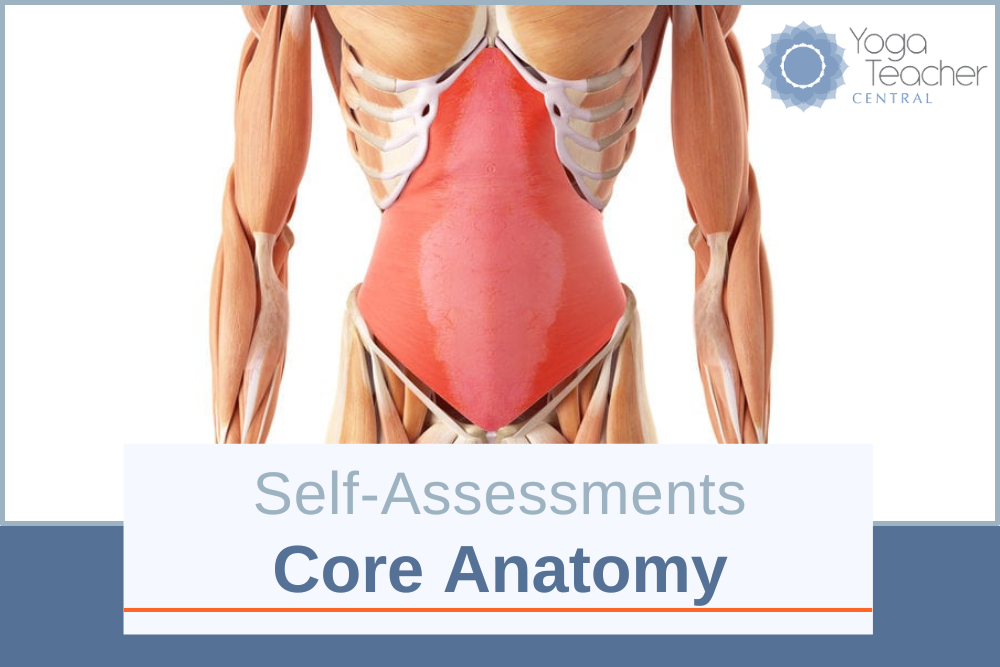
Introduction
Quickly assess your knowledge of Core Anatomy, and identify gaps in your education. See below for assessments on these subjects:
- Core Form & Function
- Core Fundamental Teachings
- TA & Engaging Deeper Abs
- Pelvic Floor
Purpose
Offer a series of free quizzes for yoga teachers to:
- Provide an effective way to assess knowledge of each of the Teaching Knowledge Standards.
- Make it easy to self-assess privately, on your own time.
- Help teachers who identify educational gaps to bolster their knowledge with accessible and practical lessons.
More Self-Assessments
For more self-assessments, see the Standards & Self-Assessment Hub.
Core Form & Function
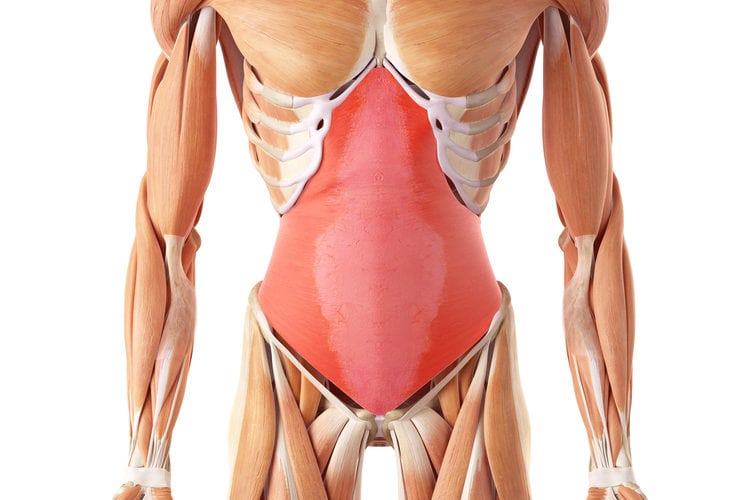
Teaching Standard
Gain an understanding of the foundational anatomy of the core, including the function of the individual muscles and the core as a whole.
Assessment
Vocabulary Mix & Match
| CORE MUSCLES |
| |
Refers to the “pressure chamber” located in our trunk between the diaphragm, pelvic floor and abdominal walls and describes how core stabilization occurs from the inside out in contrast to external muscular bracing |
| DEEP BACK MUSCLES |
| |
The outermost abdominals: rectus abdominis, internal obliques, and external obliques |
| INTRA-ABDOMINAL PRESSURE (IAP) |
| |
Muscles that stabilize the spine and pelvis |
| SUPERFICIAL ABDOMINALS |
| |
Deep core muscle that wraps around torso and supports spine |
| TRANSVERSUS ABDOMINIS (TA) |
| |
Erector spinae (spinal erectors), quadratus lumborum (QL), multifidus muscles |
Questions
- What comprises the core?
- Describe four functions of the core.
- List components of the core.
- What does the rectus abdominis do? Gives example of asanas that strengthen and stretch it.
- What do the obliques do? Provide an example of asana that work them.
- What does the TA do? What is an example of an asana that works it?
- What are deep back muscles and how do the relate to the core?
- Define and discuss the significance of intra-abdominal pressure (IAP).
- What simple exercise can give students the experience of feeling the abdominal muscles in their role as stabilizers?
Core Fundamental Teachings

Teaching Standard
Become proficient in choosing practices and verbalizing teachings to promote a balanced, healthy core.
Assessment
- Summarize some teachings that are valuable in helping students to optimize their core health?
- How can you help students gain inner awareness of their core musculature?
- Describe the potential adverse effects of excessive tightness in the core.
- What is meant by stabilizers and prime movers? Why is this important when choosing core strengthening exercises?
- A key factor in sustained core health is bringing awareness to movement patterns. Expand on this teaching.
- What are some considerations that can help to inform your choice of practices and teachings related to core health?
- What is the anatomical meaning of abdomen?
- Describe ways to effectively use verbiage such as “abdomen,” “belly,” and “core” in teaching.
TA & Engaging Deeper Abs
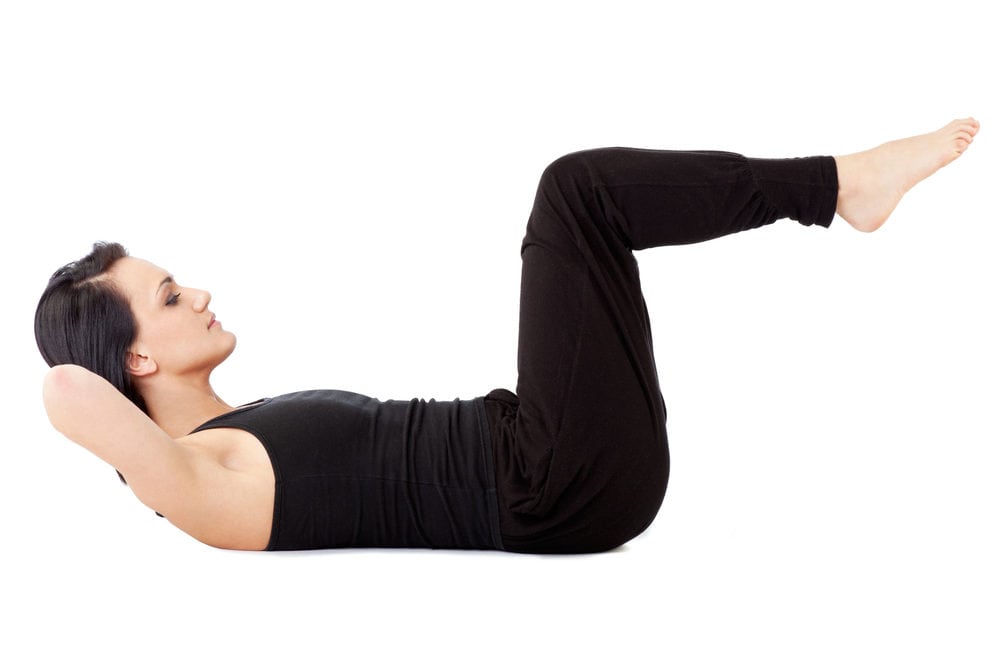
Teaching Standard
Become more deeply knowledgeable about the TA and how to effectively teach engagement of the deeper abdominals.
Assessment
- Describe the transversus abdominis (TA) and its location.
- Describe functions of the TA.
- What is the effect from engaging / contracting the TA?
- How can identifying the sensation of contracting deeper abdominals benefit students? Provide information to support this learning process.
- Describe simple exercises that can help students to identify the TA.
- When performing a lower abdominal exercise such as a leg lift, what clue can indicate the deeper abdominals are not engaged?
Pelvic Floor
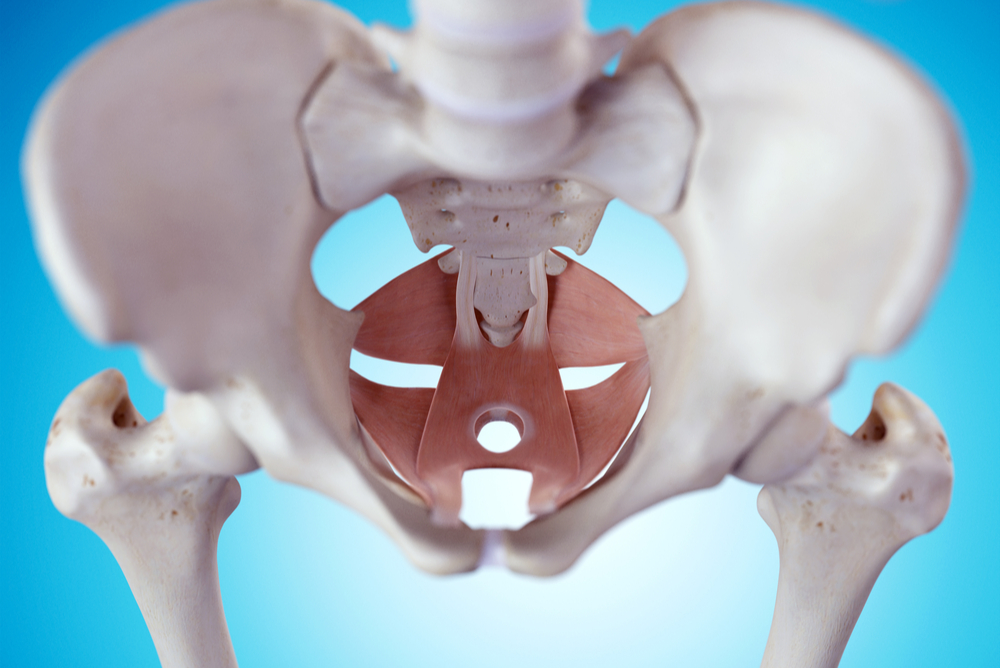
Teaching Standard
Become proficient in describing the pelvic floor, its role in core functioning, potential issues, and teachings that can contribute to pelvic floor health.
Assessment
- Describe the pelvic floor. Provide a visual and remark on its function and sensitivities.
- Where is the pelvic floor located?
- What defines healthy, natural movement of the pelvic floor?
- Describe three general functions of the pelvic floor.
- How do pelvic floor muscles contribute to core functioning?
- What are some potential issues associated with the pelvic floor?
- What factors may lead to pelvic floor weakness?
- What factors may lead to a tight pelvic floor?
- What other habits, practices and factors may cause pelvic floor issues?
- What teachings and practices may contribute to pelvic floor health?
Next Steps
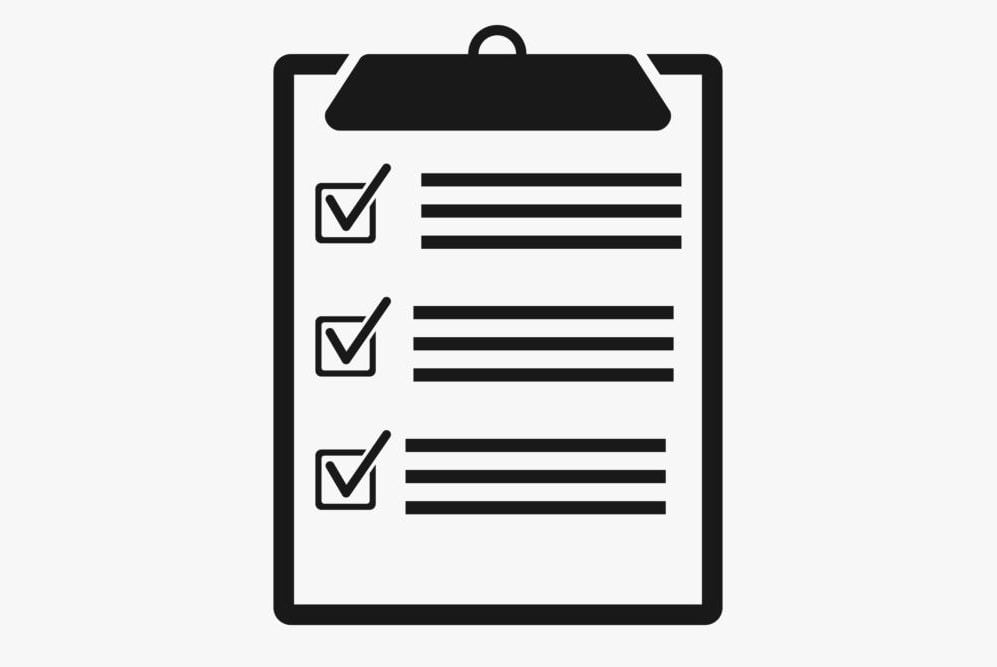
- To view more self-assessments, go to the Standards & Self-Assessment Hub.
- To bolster your knowledge and be recognized as a YTC teacher, enroll in the Yoga Teacher Central Study Program (details below).
- Members, view clear and concise lessons:

In a Nutshell
- The enrollment fee is $25 and is open to Yoga Teacher Central members, past members and non-members.
- Members receive current membership benefits plus additional benefits listed below.
- Enrollment in the Study Program qualifies you for lifetime YTC Teacher status.
Benefits
Enrolling in the Study Program gives you:
- A downloadable Knowledge Standards Lesson Guide to walk you through a structured study path toward certification.
- Selection of 5 downloadable lessons of your choice (from a library of nearly 500).
- Recognition as a YTC Teacher (for life; no expiration).
- Professional marketing kit for highlighting your YTC Teacher status on social media and your website.
- Excellent preparation for taking certification exams.
Members
- Your current membership gives you online access to not only thousands of pages of organized study and teaching knowledge, but also sequence breakdowns and teaching notes, theme plans, injury cheat-sheets, and so on.
- When you enroll in the Study Program, you get these additional benefits: a Knowledge Standards Lesson Guide, selection of 5 downloadable lessons of your choice, and a professional marketing kit for highlighting your YTC Teacher status on social media and your website.

See here for information about exams, badges and certification. Get links for each exam, and for a no-risk trial exam.
We think you’ll enjoy taking the exams. The questions are well-thought-out and the subject matter is quite engaging and significant for teachers. You’ll get an inspiring teaching after answering each question. At the end of the exam, you see a summary of wrong answers and the relevant teachings, giving you a personal study guide targeted to your needs.
This is an hour well-spent!








